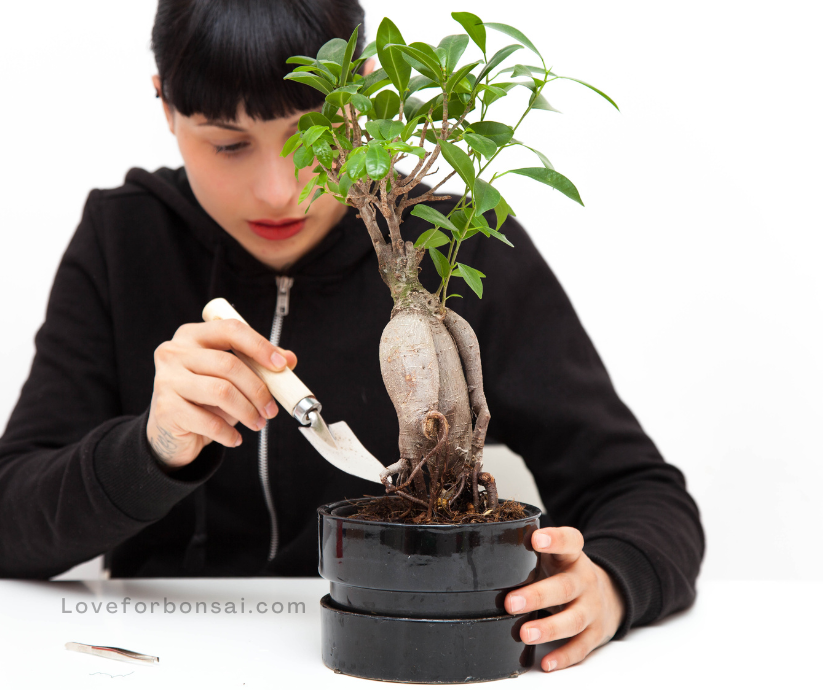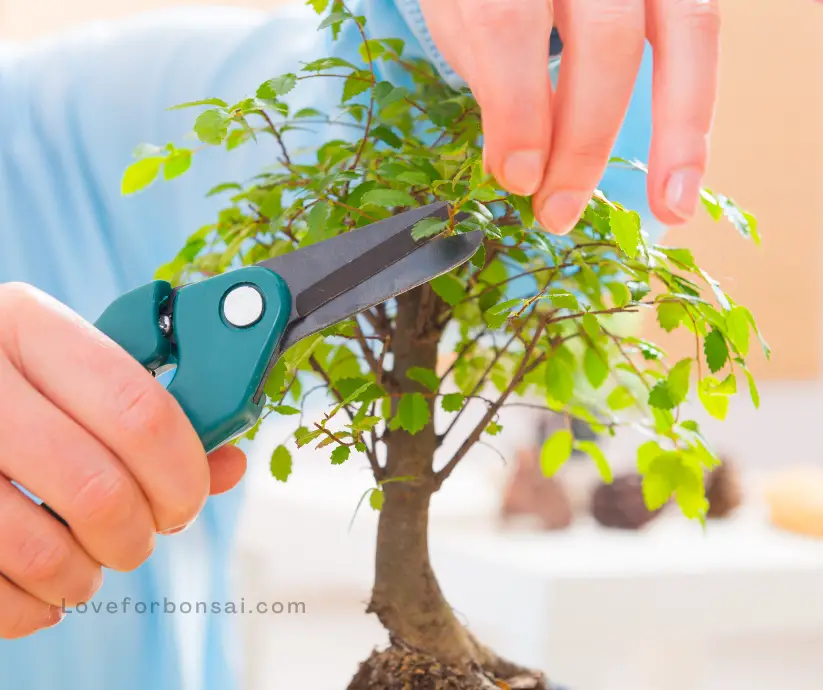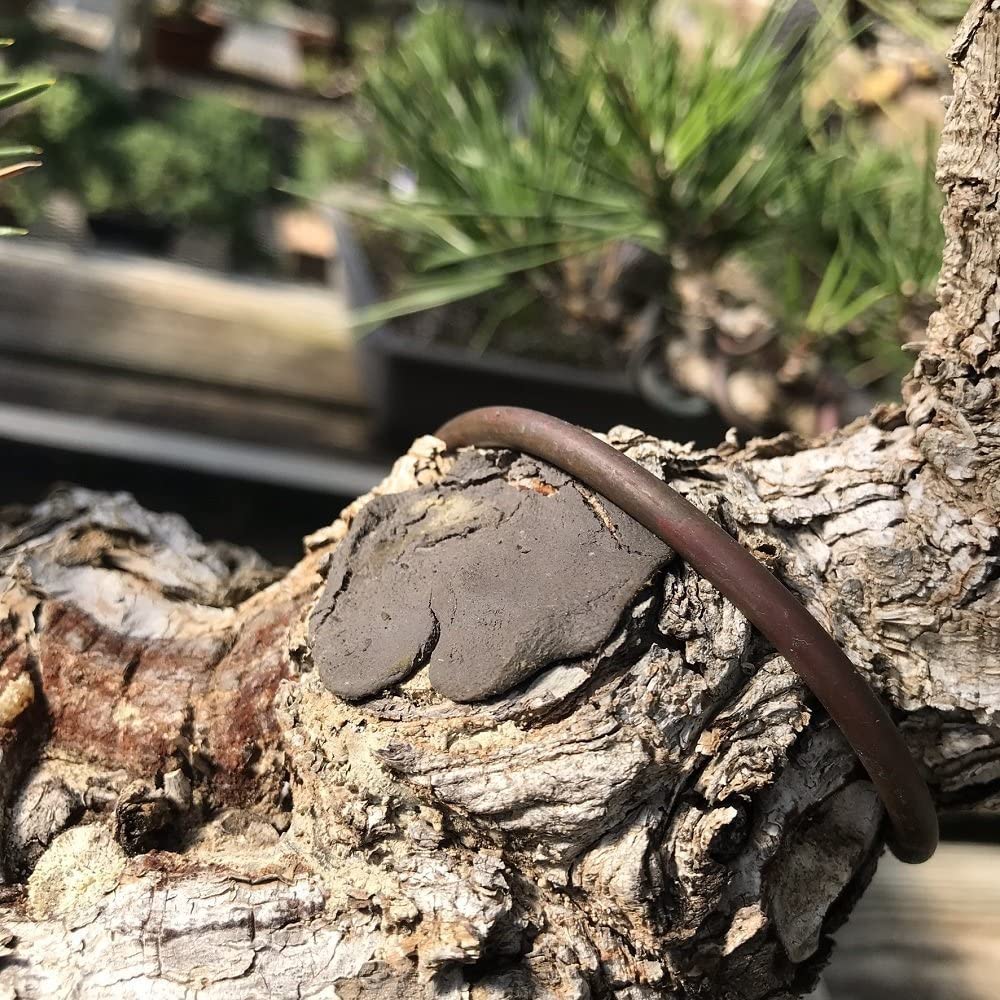If you’re a bonsai enthusiast, you understand the delicate balance between nurturing and shaping these miniature trees.
Pruning is a necessary part of bonsai care, allowing you to maintain the desired form and promote healthy growth. However, after making a cut or wound on your bonsai tree, it’s crucial to take steps to protect it and facilitate proper healing.
In this guide, we’ll delve into the art of sealing bonsai wounds and explore the essential steps you need to follow. By understanding the importance of wound sealing and implementing the right techniques, you can ensure the long-term health and vitality of your bonsai masterpiece.
Why Wound Sealing Matters
Every cut or wound inflicted on a bonsai tree presents an entry point for pathogens, moisture loss, and potential damage. Without proper care, these wounds can lead to infections, slow healing, and even jeopardize the overall health of the tree.
Wound sealing serves as a critical protective measure, creating a barrier against harmful elements and promoting the formation of scar tissue. By sealing wounds, you provide an environment conducive to healing and allow your bonsai tree to recover more efficiently.
The Steps to Effective Wound Sealing
- Clean and Prepare: Before applying any sealant, it’s essential to clean the wound area to remove debris, dirt, and loose bark. Use a soft brush or a clean cloth to gently cleanse the affected area, ensuring a clean surface for the sealant application.
- Select the Right Sealant: There are various options available when it comes to bonsai wound sealants. Popular choices include cut paste, wound sealant paste, and grafting sealants. Choose a high-quality sealant specifically designed for bonsai care, as it will offer the necessary protection and promote healing.
- Apply the Sealant: With a clean wound and the right sealant in hand, carefully apply a thin layer over the exposed area. Ensure that the entire wound is covered, including the edges. Take care not to apply too much sealant, as excessive thickness can hinder proper healing.
- Smooth and Blend: To create a more natural appearance and encourage optimal healing, gently smooth and blend the sealant with the surrounding bark. Use a clean, moistened cloth or a small spatula to achieve a seamless transition between the sealant and the tree’s surface.
- Monitor and Maintain: After sealing the wound, it’s crucial to monitor the healing progress regularly. Check for any signs of infection, such as discoloration, oozing, or foul odors. If necessary, consult a bonsai expert for further guidance.
The Benefits of Proper Wound Sealing
Implementing effective wound-sealing practices offers several significant benefits for your bonsai tree:
- Protection against pathogens: Sealing wounds prevents the entry of harmful microorganisms, reducing the risk of infections that can compromise the tree’s health.
- Moisture retention: A well-sealed wound minimizes moisture loss, providing an optimal environment for healing and preventing excessive drying of the exposed area.
- Promotes scar tissue formation: Wound sealants aid in the development of scar tissue, allowing the tree to heal and form a protective layer over the wound.
- Enhanced healing: By creating a controlled environment, proper wound sealing promotes faster healing and minimizes the risk of complications.
- Improved aesthetics: A well-executed sealant application results in a visually appealing appearance, blending the wound with the tree’s natural features.
Tips for Effective Wound Sealing
To ensure the best possible outcome when sealing wounds on your bonsai tree, follow these tips
- Timing is crucial: It’s essential to seal the wound as soon as possible after making the cut. Prompt action prevents unnecessary exposure and reduces the risk of infections. Aim to seal the wound within minutes or, at most, a few hours after pruning.
- Choose the right sealant for the job: Select a sealant that is specifically formulated for bonsai trees. Consider factors such as its effectiveness, durability, and compatibility with the tree species you are working with. Consulting with experienced bonsai enthusiasts or professionals can help you make an informed decision.
- Apply the sealant uniformly: Ensure that the sealant covers the entire exposed area of the wound, including the edges. This uniform application creates a tight seal and prevents any potential entry points for pathogens.
- Avoid excessive sealant thickness: While it’s crucial to cover the wound adequately, avoid applying a thick layer of sealant. Excessive thickness can hinder the exchange of gases and moisture, potentially inhibiting the healing process. Aim for a thin, even layer that blends seamlessly with the surrounding bark.
- Smooth and blend with care: After applying the sealant, use a clean, moistened cloth or a small spatula to gently smooth and blend the sealant with the surrounding bark. This step helps create a more natural appearance and encourages the wound to heal evenly.
- Monitor for signs of healing: Regularly inspect the sealed wound for signs of healing progress. Look for indications such as the development of scar tissue, callousing, and the absence of discoloration or discharge. Any unusual or concerning changes should be addressed promptly.
- Practice proper bonsai care: Effective wound sealing is just one aspect of bonsai tree maintenance. To promote overall health and minimize the need for extensive pruning, ensure that your bonsai receives proper care, including appropriate watering, fertilization, and protection from extreme weather conditions.
- Seek professional guidance when needed: If you’re uncertain about wound-sealing techniques or encounter complex wounds that require expert attention, don’t hesitate to reach out to experienced bonsai enthusiasts or professionals. They can provide valuable insights and guidance specific to your situation.

Final Thoughts:
Sealing a wound on a bonsai tree is a crucial step in maintaining its health and ensuring its long-term growth. By following the essential steps outlined in this guide and implementing effective wound-sealing practices, you can protect your bonsai from infections, promote faster healing, and maintain its aesthetic appeal.
Remember, bonsai care is a journey of learning and patience. Each wound-sealing experience presents an opportunity to refine your techniques and deepen your understanding of your bonsai’s unique needs.
Enjoy the process and the beauty of your miniature tree as it continues to evolve and grow under your nurturing hands.
We hope that this article has provided you with valuable insights and practical guidance on how to seal a bonsai wound effectively.
If you found this information helpful, we encourage you to share this post with fellow bonsai enthusiasts or anyone interested in bonsai tree care.
Sharing knowledge is a wonderful way to contribute to the bonsai community and help others on their bonsai journey.
If you’re hungry for more informative articles on bonsai care, we invite you to explore our website, where you’ll find a treasure trove of resources dedicated to all aspects of bonsai cultivation.
From pruning techniques to soil composition, we cover a wide range of topics to help you become a more skilled and knowledgeable bonsai gardener.
Frequently Asked Questions (FAQs)
Why is it necessary to seal wounds on bonsai trees?
Sealing wounds on bonsai trees is crucial for several reasons. Firstly, it helps to prevent the entry of pathogens, such as bacteria or fungi, which could cause infections and damage the tree’s health.
Secondly, sealing the wound creates a protective barrier that reduces moisture loss and aids in the healing process.
Lastly, proper wound sealing promotes the formation of callus tissue, which helps the tree recover and minimizes the visual impact of the wound.
When should I seal a wound on my bonsai tree?
It is best to seal the wound as soon as possible after making the cut. Prompt action is essential to minimize the exposure of the vulnerable cambium layer and reduce the risk of infections.
Aim to seal the wound within minutes or, at most, a few hours after pruning. Remember, the longer the wound remains open, the higher the chances of adverse effects on the tree’s health.
What should I use to seal wounds on my bonsai tree?
For sealing wounds on bonsai trees, you can use specialized wound sealant products that are specifically designed for this purpose. These sealants are typically made of a non-toxic, waterproof substance that forms a protective layer over the wound.
There are various brands available in the market, such as Kiyonal Bonsai Wound Paste, which are widely used and trusted by bonsai enthusiasts.
How do I apply the wound sealant on my bonsai tree?
To apply the wound sealant, start by cleaning the wound area using a clean, soft brush or cloth to remove any debris or loose bark. Then, using a clean spatula or a gloved hand, apply a thin and even layer of the sealant over the entire exposed surface of the wound, including the edges.
Ensure that the sealant covers the wound uniformly without excessive thickness. Finally, gently smooth and blend the sealant with the surrounding bark for a more natural appearance.
Is wound sealing necessary for all types of wounds on bonsai trees?
Wound sealing is generally recommended for larger wounds or cuts on bonsai trees, especially those that expose the delicate cambium layer. Smaller cuts or pruning of foliage usually do not require sealing, as the tree can naturally heal and seal those wounds.
However, it’s important to note that some experienced bonsai enthusiasts may have different opinions on this matter. It is always a good practice to observe and learn from experienced growers and adapt techniques based on your tree’s specific needs.

